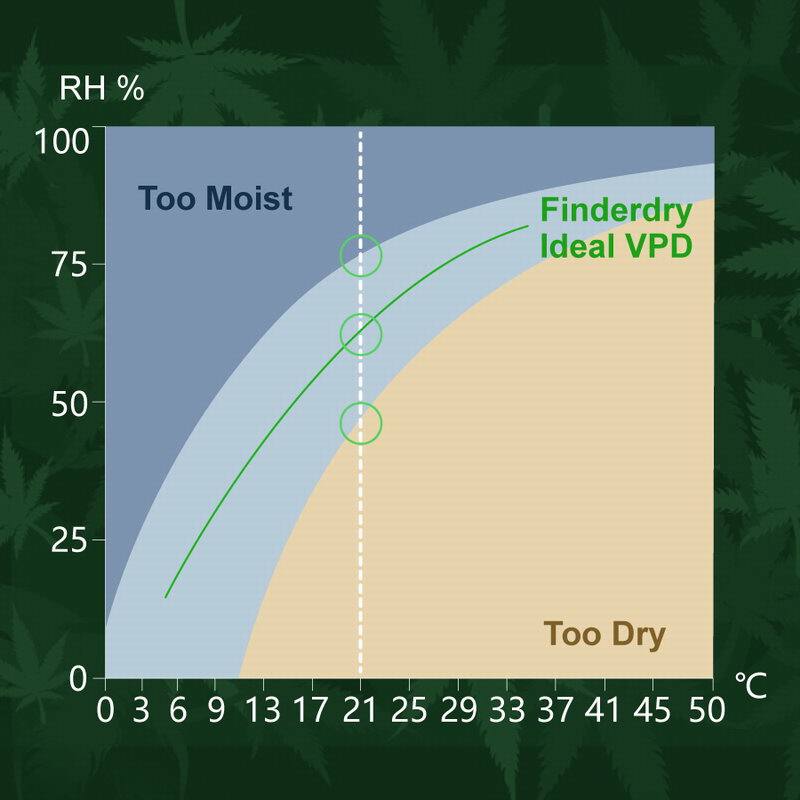Dehumidifier VPD Technology for
Plant Grow Optimized
What is VPD? How it works?
Finderdry dehumidifiers give you a way to control over your plant growing environment. Ensures maximum moisture removal and optimum VPD control. Designed to maximize crop potential and increase your profit.
VPD (Vapour-Pressure Deficit)
Finderdry dehumidifier with VPD technology, this complex system allows plants to precisely control VPD performance under all growing conditions.
Vapour-pressure deficit, or VPD, is the difference(deficit) between the amount of moisture in the air and how much moisture the air can hold when it is saturated.Once air becomes saturated, water will condense out to form clouds, dew or films of water over leaves. It is this last instance that makes VPD important for greenhouse regulation. If a film of water forms on a plant leaf, it becomes far more susceptible to rot.
When VPD increases, plants need to draw more water from their roots. In the case of cuttings, the plant may dry out. So, for this reason the range for VPD in a greenhouse is 0.45 kPa to 1.25 kPa, ideally around 0.85 kPa. As ageneral rule, most plants grow well with a VPD between 0.8 and 0.95 kPa.
Advantages of VPD Mode
VPD is an important factor that influences plant growth, water use efficiency and carbon fixation. As such controlling VPD can help to optimize not only the productivity of crops and forestry systems but also their potential climate mitigation efficiencies by fixing more carbon.
VPD Technology
What is VPD in grow room?
Vapor pressure deficit (VPD) refers to the difference between moisture that is found in the air and how much moisture the air can hold in total.
VPD design and HVAC plays a vital role in cannabis cultivation because it impacts how plants grow and thrive.
What is a good VPD for plants?
A VPD range of 0.8–1.1 (kPa) is commonly known as ideal in the vegetative stage, while a VPD range of 1.0–1.5 (kPa) is commonly known as ideal in the flowering stage.
How does VPD affect plant growth?
If VPD is too low then nutrients are not taken up with water as successfully which can lead to mineral deficiencies, such as calcium for example, and lower growth rates in general. Low VPD is also associated with highly saturated water in the surrounding environment leading to moulds and root rots in plants.

Does VPD increase yield?
For many crops, VPD actually has little to no effect on yield! Research shows that VPD has no effect on flower number or plant yield in some species (Erickson & Markhart, 2001).
What happens when VPD is too high?
If your Vapor Pressure Deficit is too high, it means that your ambient air is so dry that the plants transpire too rapidly. This will result in overdrying and stressing of the plants. By managing VPD, you can manage the rate at which the plants transpire and, in turn, control the metabolic rate of the plants.
Grow Tent and Small Grow Room Dehumidifier Solutions




